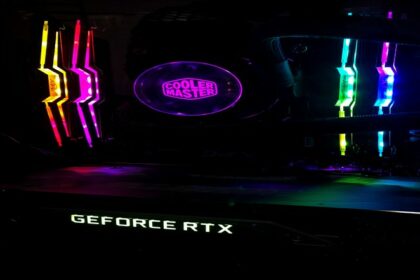Unbuffered and buffered RAMs are just another classification used to describe a RAM’s purpose. Even if you know how to check RAM types on your PC, it will show DDR3 or DDR4 but that will not tell you if it is buffered or unbuffered.
Other than SRAM and DRAM classifications, buffered and unbuffered RAM only have one main difference.
In most cases, you are probably running an unbuffered RAM already but not many people know exactly what unbuffered RAM is.
This article will show you the differences between buffered and unbuffered RAM.
How Does RAM Work?

To better understand what unbuffered RAMs are, you need to know how the RAM works first.
RAM stands for Random Access Memory. It accesses data by storing it and moving it to another location as it is read. That is the most simple way of explaining it and the speed of this is determined by the RAM.
The speed of the RAM directly affects how fast the processor can access it and well, process it. With regards to speed, it has transmission speed (measured in Megahertz) and CAS latency that can help improve the data transfer process.
You would want a lower CAS latency as it is the delay of how many clock cycles is needed to have the data readily available. For the speed, you want it to be higher as it is how fast the RAM can access its data.
The Differences Between Buffered and Unbuffered RAM

Unbuffered RAM
For unbuffered RAM, it gives the RAM direct access to the memory controller and therefore places more electrical load overall.
By giving the RAM direct access immediately, it does not have to cycle through the register for the data and giving it a significant advantage over a buffered RAM.
It is cheaper but with less stability.
Unbuffered RAM is regularly used for desktops and laptops as the buffer is not needed for that type of system.
Buffered RAM

The buffered RAM has a register that the RAM has to go through before it can access the memory controller. This is basically the “buffer” that provides stability to the whole process and lessens the electrical load in the meantime.
They are a special type of RAM that is used for servers and systems in a workspace. That is much more complicated and you probably don’t have to worry about it as IT experts specialize in this and usually set it up on your behalf.
Buffered is not the type of thing you’d go for when looking for the best gaming RAM.
Does Unbuffered RAM Have Better Performance?
Like mentioned before, buffered RAM sacrifices a clock cycle to go through the register before going through the memory controller. This clock cycle is significant in terms of speed because that is where the CAS latency comes in.
Even having 1-2 lower CAS latency on your RAM can improve your performance significantly and a buffered RAM sacrifices a whole clock cycle to go through the register.
Unbuffered RAM will always be better in terms of performance but the stability and reliability are much lower compared to a buffered RAM. You should not worry about this when you are just using your PC personally.
Conclusion
When it comes to personal use, unbuffered RAM is always the best way to go. Even then, only specific motherboards can support buffered RAM anyway. There are no dangers when it comes to the RAM even with the higher electrical load.
Unbuffered RAM is cheaper and more efficient that is why there is no reason to get a buffered RAM for personal use. All you need to know is what RAM is compatible with your PC and go for an unbuffered RAM.






